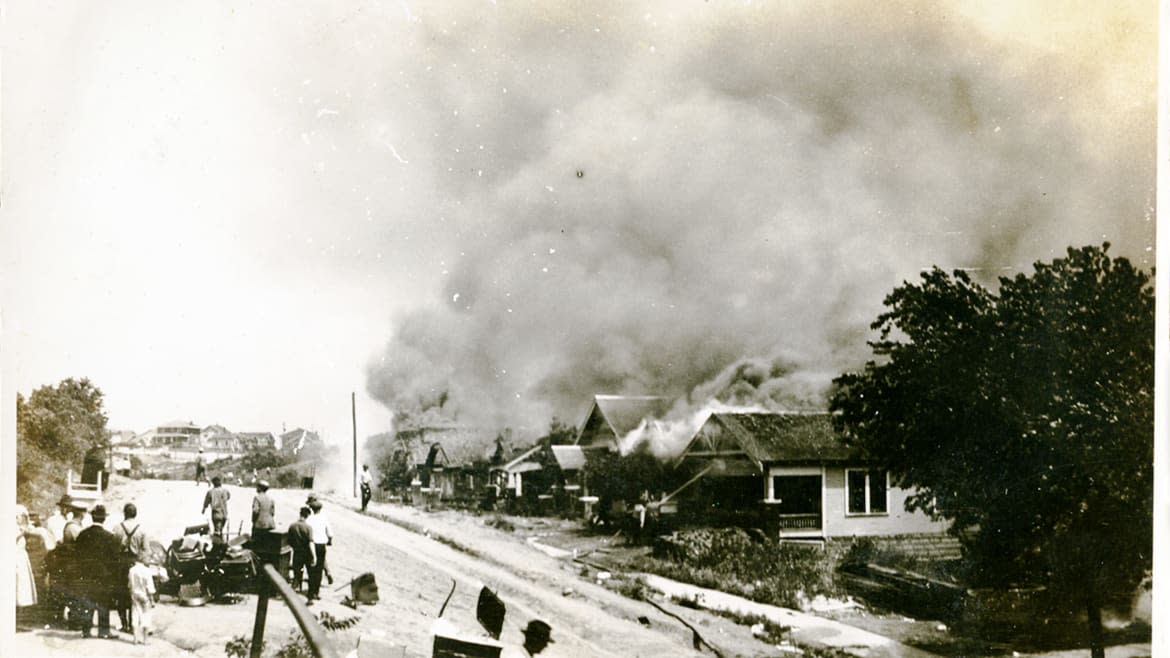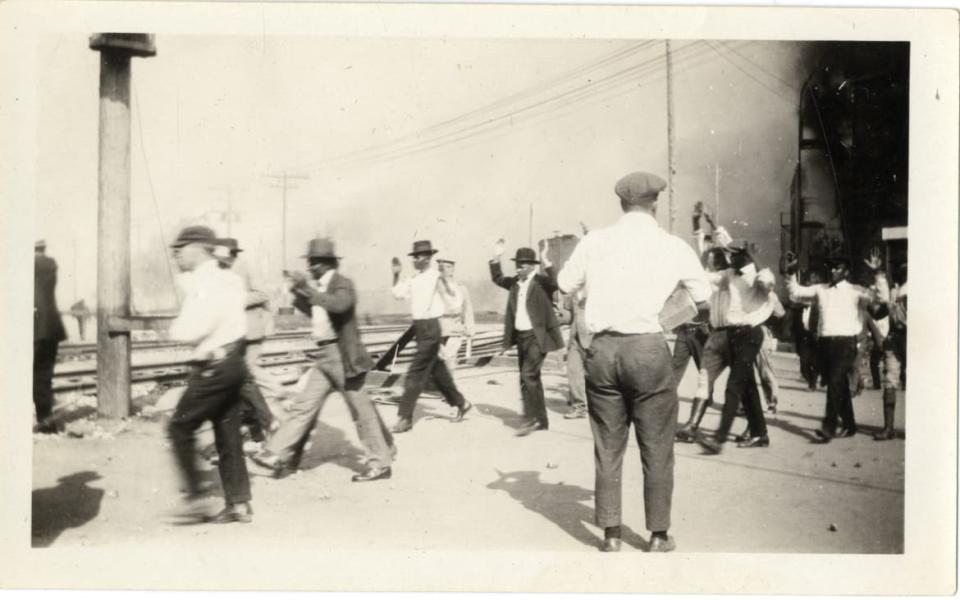Nothing Prepared Me for the Horrors of Tulsa and the Red Summer Massacres

- Oops!Something went wrong.Please try again later.
- Oops!Something went wrong.Please try again later.
I’ve been making films about civil rights history for over a decade, but nothing prepared me for the truth of Tulsa and the Red Summer massacres. This year marks the 100th anniversary of the massacre that occurred in Tulsa, Oklahoma. If you haven’t yet heard this story, it bears repeating. On May 30, 1921, a young Black man named Dick Rowland boarded an elevator occupied by a young white woman named Sarah Page. Some say he tripped and brushed up against her, others say they were secret lovers, but all agree that whatever happened in that elevator sparked one of the deadliest events in American history.
Rumors began to spread that Rowland had attacked Sarah Page. Tulsa police arrested Rowland, angering the Black residents who headed to the courthouse to try and prevent a mob from killing him. In the restless crowd shots were fired, sparking a confrontation between Black and white. Two days later on June 1, 1921, the once prosperous section of Tulsa known as Greenwood was looted and burned by white rioters. Eyewitnesses recounted shocking acts of brutality. Hundreds were killed and over 800 people were injured. More than 6,000 Black Tulsans were interned in a refugee camp, some for as long as eight days.
When all was said and done, some 35 city blocks were destroyed, and more than 800 people were treated for injuries. Historians now believe as many as 300 people may have died. Most people have never heard this history, relegating it to a whispered cautionary tale in Black homes across the city. Parents told their children of the atrocities to protect them from similar attacks, a gruesome echo of “the talk” that so many Black parents have with their children today.
The first time I heard the story of Tulsa, I wondered what it was about that place that made it special, that singled out the Black community there for such terrible violence. The answer was even more sobering. Tulsa was not unique; in truth, it was one of a long history of massacres, a series of violent events that came to be known as the Red Summer.
In East St. Louis, Illinois, and Elaine, Arkansas, mobs hunted Black citizens; in Washington, D.C., soldiers shot and killed Black residents in front of the White House. On and on and on.
The magnitude of this violence was hard for me to absorb but so necessary to learn. I turned the question of “why?” over and over in my mind until an idea began to take shape. The Black people targeted in these towns were more often than not asserting power. In the minds of their white neighbors, they were stepping out of their place. Black soldiers returning from war after serving their country honorably wanted their full rights. Entrepreneurs wanted fair pay. Others wanted better working conditions, and so they tried to unionize.
It occurred to me that Blacks were targeted not out of some random hatred, but out of fear. Fear that too much Black success would upend a social order that prioritized white comfort and economic dominance. Not every Black person killed during these massacres was wealthy—in fact, most were just living ordinary lives. It was that very ordinariness—living, loving, and creating solid communities—that triggered so much white anxiety that mobs were bent on destroying them. It was not enough to impose segregation, Jim Crow, and other discriminatory practices. Living in comfort was enough of a threat to get Black people killed.

Detainees being marched along the train tracks with their arms raised, during the Tulsa Race Massacre of 1921.
But there emerges another story from this time—a picture not only of Black victimhood but of Black strength and resistance. Black men, women, and children did what they could to protect what they had. And when that was not enough, and their communities were destroyed, they rebuilt again and again and again. We should study this history not only to understand the violence but to understand the resistance. Resistance too is the story of Black America.
Something else is critically important. We know the truth of these massacres largely due to the heroic efforts of the Black press. Black journalists across the country reported facts about the killings and refused to let the story die.
I stand on the shoulders of these men and women who kept pursuing a truth so that others would someday retell the story. These stories are important. They are bitter truths that help us understand that violent extreme racism is not a 21st-century invention. It has long and bitter roots. Only by acknowledging this history can we try and avoid repeating it.
Rise Again: Tulsa and the Red Summer premieres June 18 at 9 p.m. EST/PT on National Geographic
Get our top stories in your inbox every day. Sign up now!
Daily Beast Membership: Beast Inside goes deeper on the stories that matter to you. Learn more.

